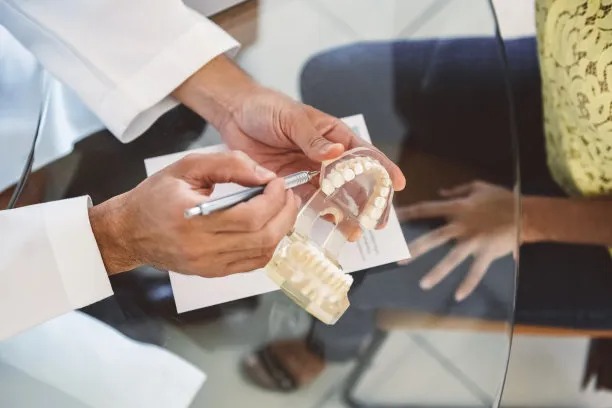Understanding the Benefits and Process of Dental Implant Treatment for Enhanced Oral Health and Functionality
Summary: Dental implants are a revolutionary solution for individuals facing tooth loss, providing benefits that extend far beyond mere aesthetics. This article explores the multifaceted advantages of dental implant treatment, including improved oral health, enhanced functionality, lasting durability, and a seamless integration process. The article further details the steps involved in obtaining dental implants, from initial consultation through aftercare. By understanding these elements, patients can make an informed decision that significantly enhances their quality of life and oral well-being.
1. Benefits for Oral Health and Hygiene

One of the primary advantages of dental implants is their substantial contribution to oral health. Unlike traditional dentures or bridges, dental implants are embedded directly into the jawbone, which helps preserve bone density and structure. When a tooth is lost, the jawbone can begin to deteriorate over time due to lack of stimulation, potentially leading to further tooth loss and changed facial structure. Dental implants provide the needed stimulation that keeps the bone healthy and intact.
In addition to bone preservation, dental implants are also easier to maintain than other tooth replacement options. Patients with dental implants can practice normal dental hygiene routines without any additional complications. Flossing, brushing, and routine check-ups at the dentist become simpler, allowing for improved overall dental care and reduced risk of decay and infections that often accompany bridges or dentures.
The seamless integration of dental implants into the existing dental structure offers a more natural feel and function, contributing to enhanced oral health. Patients can enjoy food without the discomfort that often comes with removable dentures, leading to a better quality of life. This natural alignment also reduces the risk of gum disease, as the implants do not rely on adjacent teeth for support, ensuring that oral hygiene can be maintained effectively.
2. Enhanced Functional Abilities
Beyond oral health, dental implants significantly enhance functionality and overall daily living. One of the most notable improvements is the restoration of biting and chewing function. Unlike dentures, which can slip during eating or speaking, dental implants are secured in place, providing a stable and reliable foundation. This stability allows individuals to confidently consume a variety of foods, which is vital for overall nutrition and health.
Dental implants restore not only the physical ability to chew but also aid in speaking functionality. Many denture wearers experience difficulties with pronunciation due to shifting plates. With dental implants, the worry of slippage is removed, allowing for more natural speech patterns. This boost in both confidence and ability allows patients to engage more freely in social situations, impacting their social life positively.
Moreover, dental implants contribute to improved longevity in functionality. With proper maintenance, implants can last many years, often a lifetime, making them a more permanent solution compared to alternatives such as bridges or dentures that may require replacement or adjustment over time. By addressing important aspects of functionality, dental implants serve as a long-term investment in ones quality of life.
3. Long-lasting Durability and Reliability
When considering dental work, durability is crucial. Dental implants are known for their robust structure and long-lasting nature. Made from biocompatible materials such as titanium, dental implants are designed to fuse with the jawbone through a process called osseointegration. This bond makes them exceptionally strong and durable, allowing them to withstand daily pressures from chewing and biting much like natural teeth.
The longevity of dental implants is a compelling reason for their increasing popularity. Unlike other dental solutions which may need regular replacement, implants can last for 10 to 15 years or even longer with proper care. This durability translates into lower long-term costs and fewer visits to the dentist for replacements or repairs.
Furthermore, dental implants carry a high success rate, estimated between 95-98%, depending on various factors such as location in the jaw and individual patient health. This high success rate, coupled with the strength and resilience of the implant, underscores the reliability of dental implant treatment as a preferred option for tooth replacement.
4. Steps in the Dental Implant Process
The dental implant process begins with an initial consultation, where the dentist assesses the patients oral health and suitability for the procedure. This step typically includes X-rays and a thorough examination of the jawbone. Patients are advised on available options and what to expect throughout the process.
Once deemed suitable, the next step involves placing the implant itself into the jawbone. This surgical procedure is usually performed under local anesthesia, allowing for minimal discomfort. After the implant is placed, a healing period of several months is necessary for osseointegration to occur, during which the implant becomes securely attached to the bone.
Finally, after successful healing, the dental crown is designed and fitted to complete the restoration process. Impressions are taken to create a crown that matches the patient’s existing teeth in color and shape. After placement, follow-up care involves regular check-ups to ensure the health of the implant and surrounding tissues, ensuring a seamless transition to enhanced oral functionality.
Summary:
In summary, dental implants present a myriad of advantages, including improved oral health, enhanced functional abilities, lasting durability, and a straightforward process. Individuals considering this option can look forward to a solution that significantly enhances their quality of life while providing reliable and lasting results.
This article is compiled by Vickong Dental and the content is for reference only



